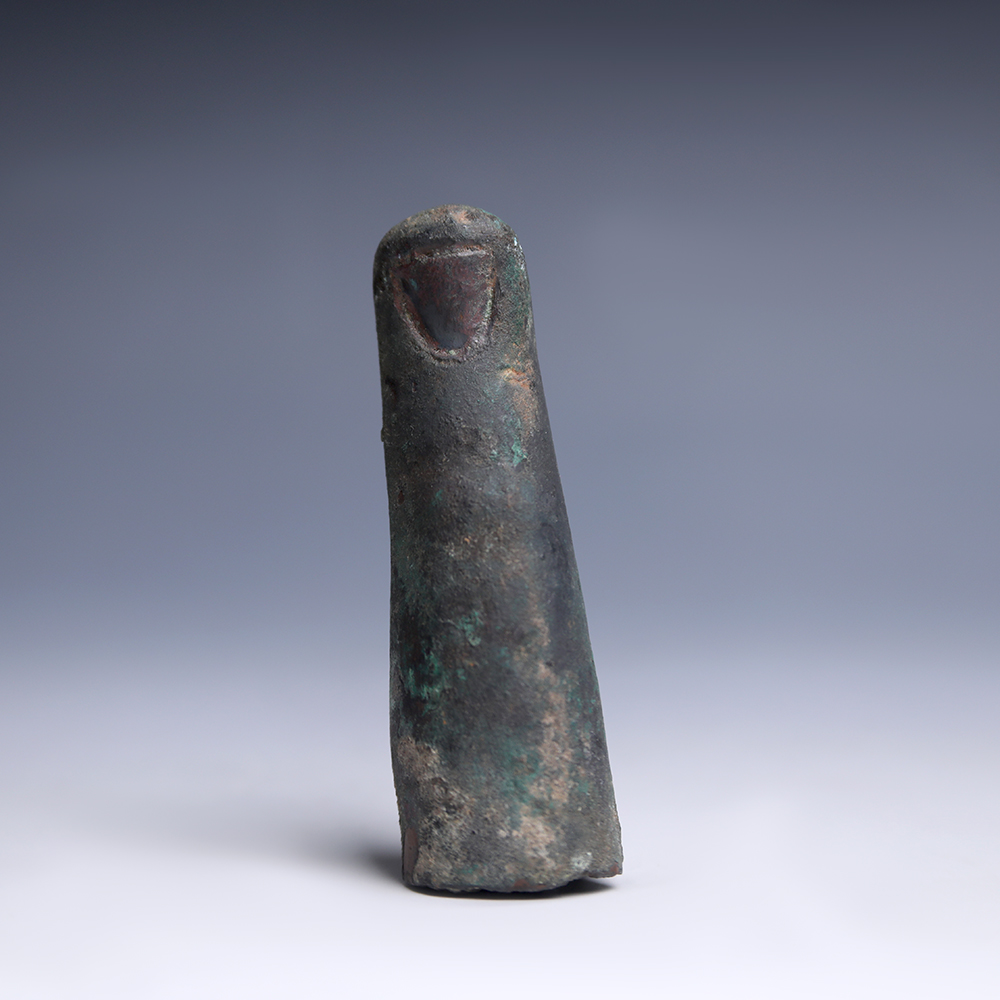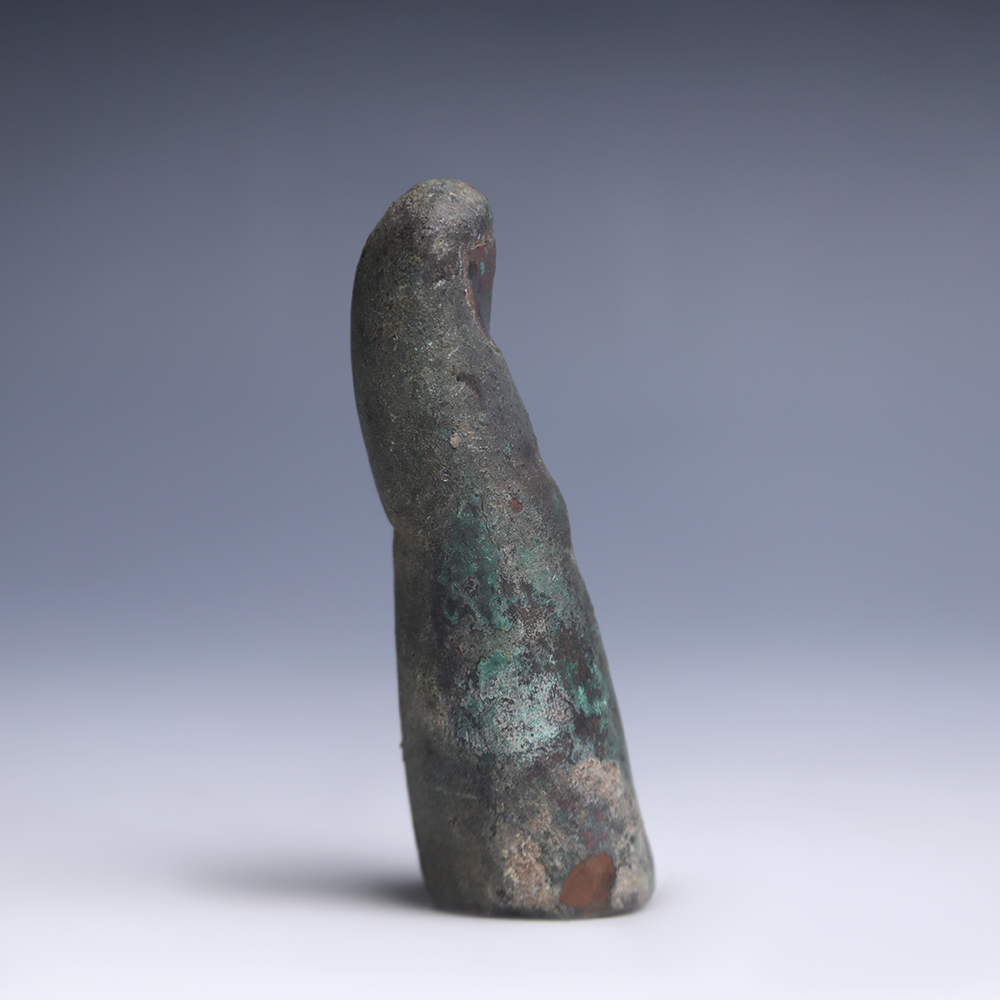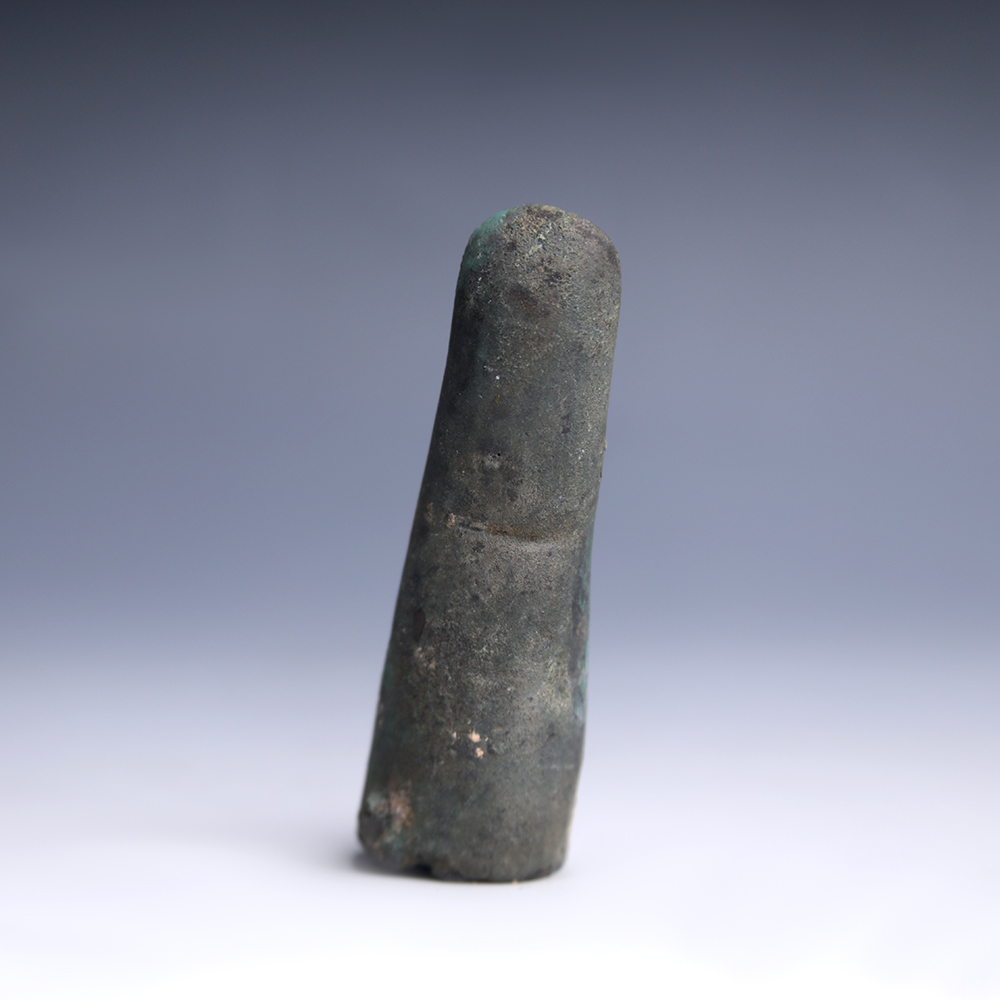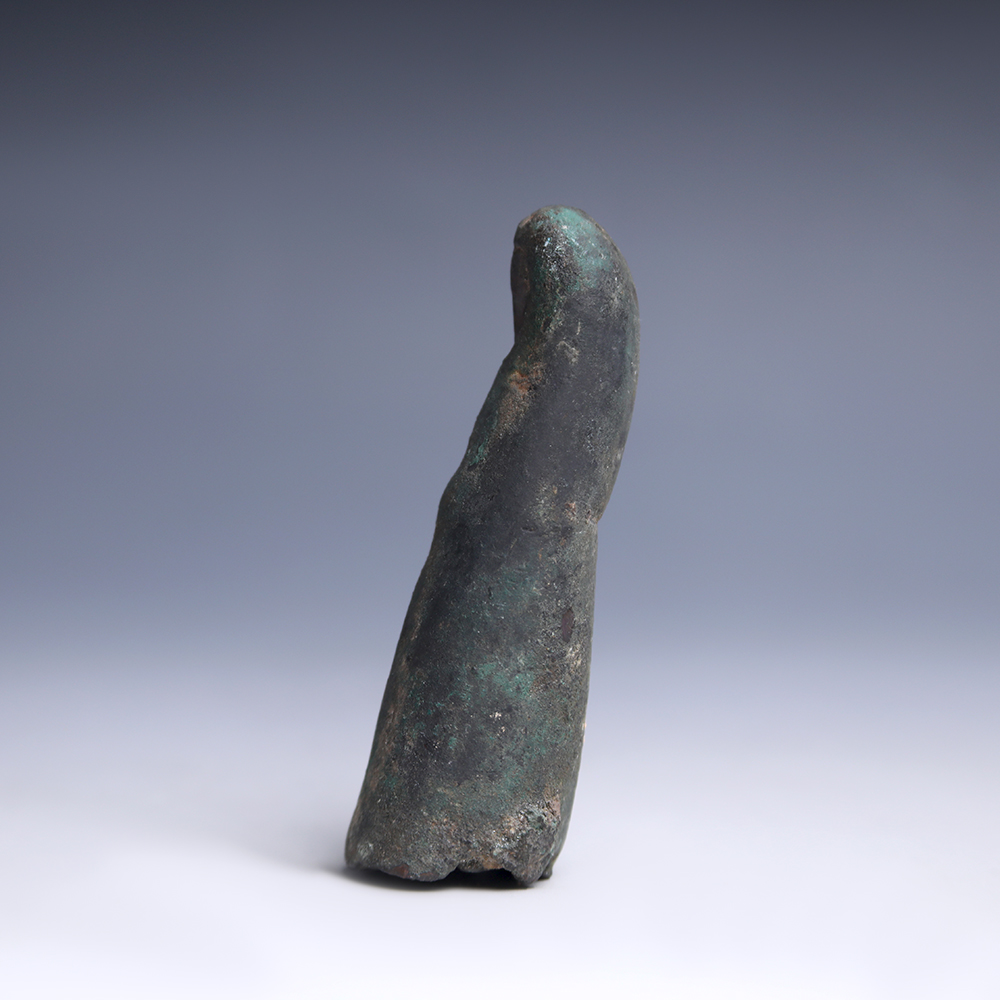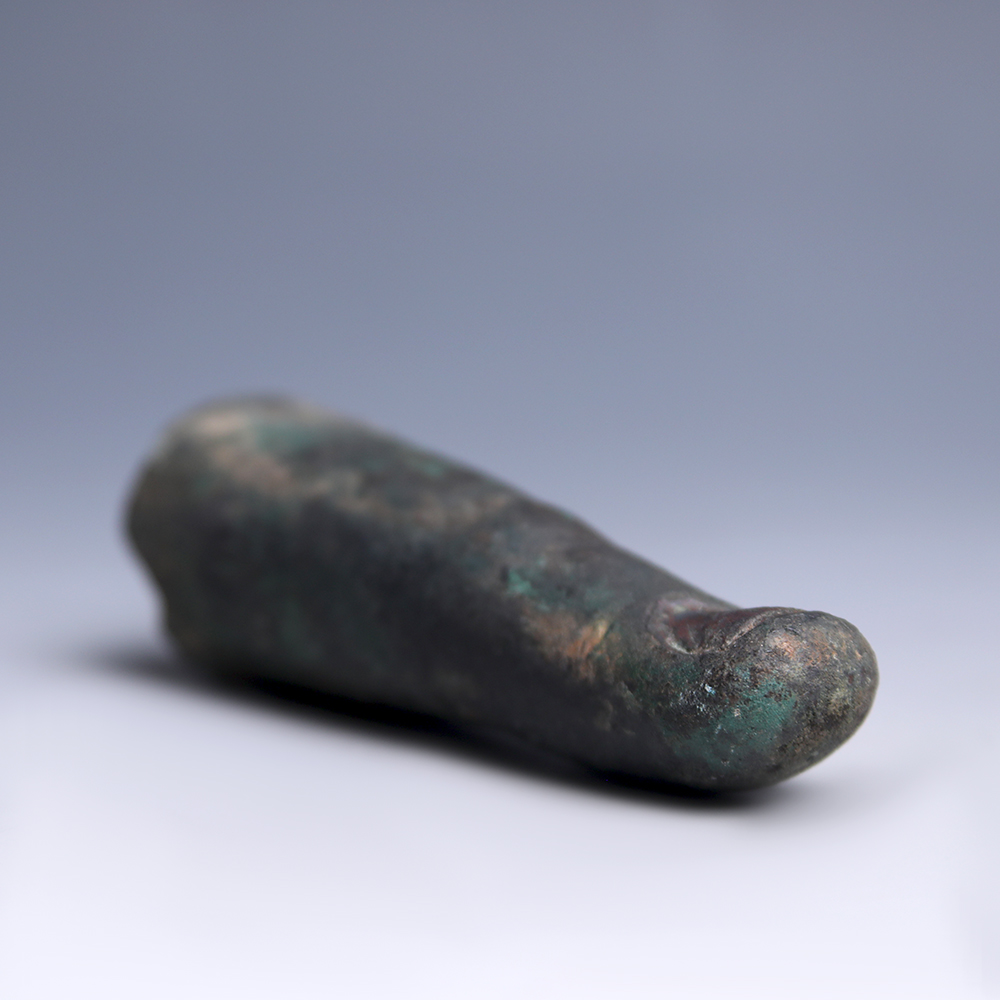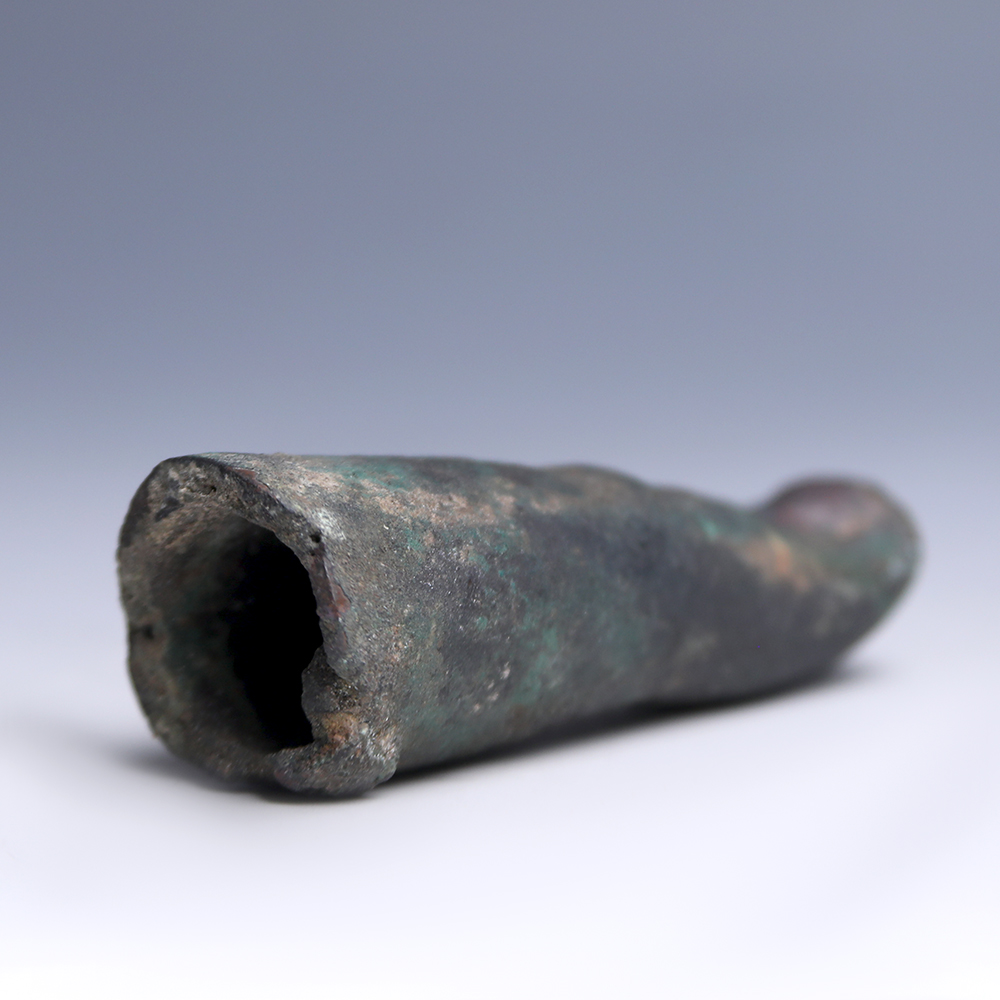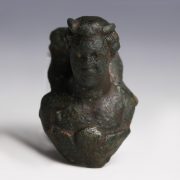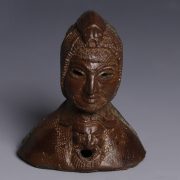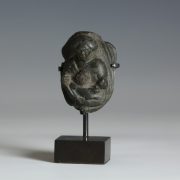Roman sculpture was highly influenced by Greek art, blending the idealised human forms of Greek statues with a greater aspiration for realism, which led to an unprecedented excellence in portraiture. Mostly attested by the large corpus of stone statues which has survived to our days, Roman statues were also produced in bronze, though life-size bronze examples are much rarer as they were commonly recycled for their material, both in antiquity and in later times.
Roman bronze statues were mostly created with the lost-wax method, a technique already used by the Greeks, which allowed for more versions of a same statue, as well as larger pieces, to be produced. In such process of bronze casting, a model, likely of clay, would have been sculpted in the desired form, then clay or plaster moulds would have been formed around the model’s different sections to prepare a wax replica of the original model. A new mould for casting would have later been formed around the wax model, then heated to melt out the wax and leave a void in the shape of the wax replica. Molten bronze was poured to fill the interior of the casting mould, which, once cooled off, would have been broken to release the bronze model. Separately cast parts were finally assembled and fused together.
